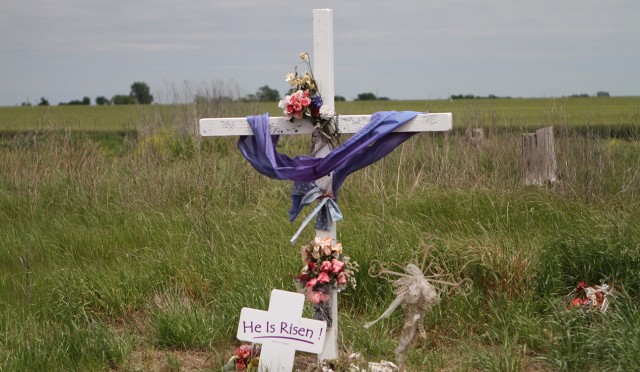
Jess Schurz | Lariat Photographer

Jess Schurz | Lariat Photographer
Kalli Damschen
Staff writer
It’s been two years since the deadly explosion in West, but lawmakers have yet to make the critical changes that would prevent potential recurrences.
On April 17, 2013, a fire at the West Fertilizer Co. storage and distribution facility spread to the company’s stores of ammonium nitrate, a highly explosive chemical compound used as a fertilizer. The resulting explosion killed 15 people, primarily first responders, and left over 200 injured. More than 150 buildings were damaged or destroyed, including West Middle School, nearby apartment buildings, houses, shops and a nursing home.
“There were a number of displaced families,” said Suzanne Hack, executive director of West Long-Term Recovery. “We dealt with a large number of homes that were completely destroyed. In addition to that, a number of homes that needed extensive repairs, moderate repairs and just things like windows blown out.”
The West explosion brought the safety hazards of ammonium nitrate to national attention, but two years later, the system has made few changes regulating the safe storage of ammonium nitrate. The State Fire Marshal’s Office has no enforcement authority, so if they discover fire hazards during voluntary inspections, facilities are not obligated to make the recommended changes.
“There’s not a state-wide fire code,” said State Fire Marshal Chris Connealy. “Many of these facilities were built in the very few jurisdictions that have a locally adopted fire code. Those facilities were built prior to that fire code being adopted, so they don’t have to meet the current standards associated with it. There’s not a whole lot of present standards.”

Jess Schurz | Lariat Photographer
Although ammonium nitrate caused the explosion, the original cause of the fire is still unknown.
“The fire didn’t originate in the bins where they stored the ammonium nitrate near the fertilizers,” Connealy said. “It originated in what we refer to as the ‘seed room’ that was adjacent to those bins. There were combustibles in that seed room. We still don’t know what started the fire, and there’s still an active fire investigation. But having those combustibles in there, the fire was able to grow and it ultimately reached the ammonium nitrate bins. That was catastrophic.”
A few new standards have been implemented through the Office of the Texas State Chemist, however. The OTSC regulates the sale of ammonium nitrate. In recent years, the Texas Administrative Code has expanded to include new regulations about the risk management of ammonium nitrate.
According to Title 4, Chapter 65, paragraph D of that code, a person that stores ammonium nitrate must provide evidence of compliance with the regulations, post warning placards outside the storage area and store ammonium nitrate at least 30 feet away from any combustible material.
“I would just grill it down to separate and ventilate,” said Dr. Tim Herrman, state chemist and director of the OTSC. “Having companies separate is well within our regulatory authority. We require separation of chemicals in the feed industry as well, separating pesticides from feeds and having drugs isolated at particular locations.”
While the OTSC can regulate the separation of ammonium nitrate from combustible material, their scope of authority is limited and they are unable to impose other safety regulations. Connealy says the requirement that ammonium nitrate be stored 30 feet from combustible material is a “significant improvement,” but some state legislators are concerned that this isn’t enough.
Three bills have been proposed that would expand the government’s authority over facilities storing ammonium nitrate. One, proposed by Rep. Eddie Rodriguez, would require the Texas Department of Insurance to review the risk level of ammonium nitrate facilities and determine what their liability insurance should be.
Rep. Joe Pickett proposed another bill which would give the State Fire Marshal’s Office inspection authority, require facilities to address violations within 10 days and allow the office to write new regulations for ammonium nitrate facilities. The third bill, proposed by Rep. Kyle Kacal, would also give inspection authority to the State Fire Marshal’s Office but would not allow the office to write new regulations.
The bills have until the end of the current legislative session on June 1 to pass.
In addition to improving the safety of ammonium nitrate facilities, other efforts have attempted to better inform the community and first responders. An app on the website of the State Fire Marshal’s Office allows users to input their zip code and discover if there is an ammonium nitrate facility nearby.
Connealy said one priority is to ensure that first responders are cognizant of ammonium nitrate facilities in their area and know how to respond in the case of a conflagration like that in West, where the explosion claimed the lives of 11 fire fighters.
“We see fire, we want to fight it,” Connealy said. “Some fires we shouldn’t fight. This is an example of one. And so we want the local officials and fire departments, those that are going to be responding to these facilities, to be prepared.”





